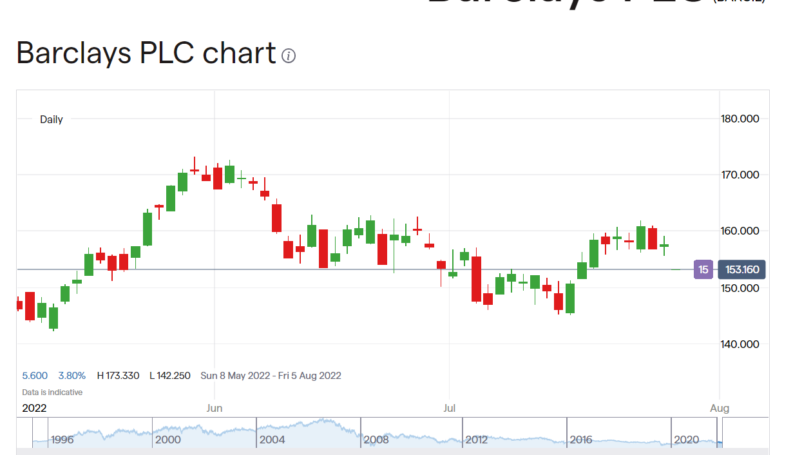Key points:
- Barclays shares fall 2.5% on half year results
- They're not bad, just not as good as some thought
- Except, of course, for that capital markets boo boo
Barclays (LON: BARC) shares are down 2.5% in London on the back of their half year results. There's nothing very wrong in the numbers, much of it is in fact quite good. It's just that it's not quite as good as might have been thought. The underlying here being that banks should benefit from rising interest rates but Barclays, because of the structure of the business, less than some others. Given that the large investors don't like being overweight in a sector let alone a single stock this means that some others – Lloyds say – are preferable to those investors. Thus the divergence in reactions to results, Barclays down this 2.5%, Lloyds up 4.5% yesterday.
Barclays does of course have specific problems. That over issue of securities that they've had to buy back has increased in expense since it was first announced. But these numbers are after that ” having reflected a £0.6bn net of tax impact for the Over-issuance of Securities in the US”. However, there's an indication of that comparison with Lloyds, and other British banks, in there too. Return on equity was 10.1% but without that capital markets oopsie “Excluding this impact, RoTE was 12.5%”. If one such error of not checking documents can lead to a 2.5% fall in return on equity then the earnings of such a company are going to be lower valued than someone with more reliable earnings.
It's this which leads to Barclays trading at half total net asset value. Yes, yes, there are lots of assets there, the return is that 10.1% on equity and yet the returns are risky. The reason for that being that more of Barclays returns come from investment banking and the capital markets than the other UK banks. That's just the way it goes.

Also Read: How To Buy Barclays Shares
The thing we should understand about banking shares is that rising interest rates are good for profits. The bank lives off the difference between deposit and lending rates. With interest rates on the floor this past decade – and few willing to deposit at negative rates – earnings have been suppressed. So, as interest rates rise then gross interest margin rises – this feeds through to the bottom line. As we've pointed out before between Barclays, Lloyds and Metro, the exact effect of this differs given the banks' business book. Lloyds is largely a retail and mortgage bank working in sterling. Barclays does much more dollar business and also has a very much larger investment banking operation. That interest rate effect is upon the loan business, not investment banking.
Therefore the effect of rising interest rates on the Barclays' business does exist, it's just much weaker than it is upon Lloyds. Which gives us our explanation for at least some of the divergence in share price reactions to recent results. There is also, on top of that, the reminder of the fragility – the risk – of investment banking profits. As they're more volatile, risker, they're more lowly valued.




